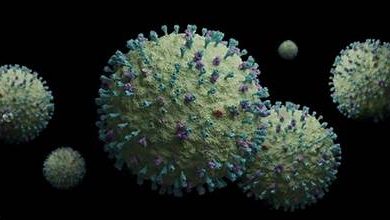
The bacteria Vibrio cholerae is the cause of the potentially fatal disease cholera. It is mostly spread by contaminated food or water, and it poses a serious threat to public health, especially in places with insufficient access to clean water and poor sanitation. Controlling cholera outbreaks and lessening the disease’s impact on communities requires an understanding of the illness and the application of practical preventative measures.
Symptoms
The highly contagious disease cholera is contracted by consuming tainted food or water (2). If treatment is not received, severe cases of cholera can result in fatality within hours and produce severe acute watery diarrhea.
Although the germs are present in their feces for one to ten days after infection and are released back into the environment, where they have the potential to infect others, the majority of people infected with V. cholerae do not exhibit any symptoms.
Most individuals who experience symptoms do so in a modest or moderate way. A person may not exhibit symptoms for 12 hours to 5 days. A small percentage of individuals have severe dehydration and abrupt watery diarrhea. If untreated, this can result in death.
Understanding Cholera
A cholera infection can cause extreme diarrhea and dehydration, which frequently hastens the onset of symptoms including cramping in the muscles, vomiting, and shock. It can be lethal if treatment is delayed, particularly in young infants and those with weakened immune systems.
The cholera-causing bacteria can spread quickly in places with inadequate sanitation and limited access to clean water. It is found in feces-contaminated food and drink. Natural catastrophes, humanitarian crises, and overcrowding are frequently associated with cholera outbreaks.
Prevention Strategies
Water and Sanitation
The key to preventing cholera is to increase access to sanitary facilities and clean water. Investing in water treatment equipment, encouraging hygienic habits, and offering instruction on secure water storage and purification techniques can all help achieve this. The danger of cholera transmission must be decreased through initiatives to upgrade sanitation infrastructure, such as the construction of latrines and sewage systems.
Vaccination
In at-risk groups and during humanitarian crises, vaccination campaigns can be very effective in averting cholera epidemics. It has been demonstrated that oral cholera vaccinations can lower the disease’s occurrence, and the World Health Organization advises using them in high-risk locations.
Health Education
Programs for community-based health education are crucial in spreading knowledge about the prevention and transmission of cholera. Promoting the value of handwashing, hygienic food preparation, and good sanitation techniques can enable people to defend against cholera for both themselves and their communities.
Conclusion
A multifaceted strategy that addresses problems with water and sanitation, immunization, and health education is needed to avoid cholera. Governments, non-governmental groups, and local communities must work together to find sustainable ways to stop cholera epidemics. We can endeavor to lessen the impact of cholera and safeguard the health and wellbeing of susceptible communities over the globe by comprehending the illness and putting into practice efficient preventive measures.



